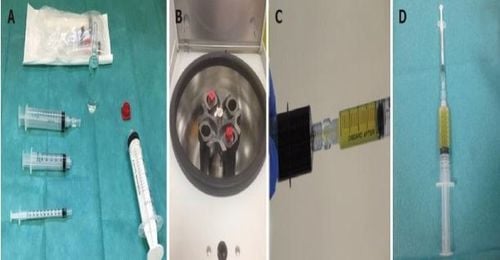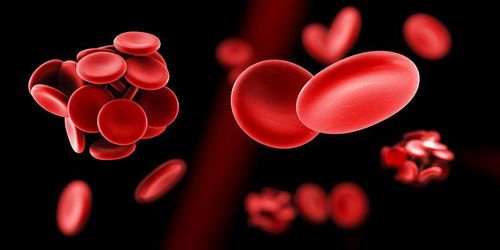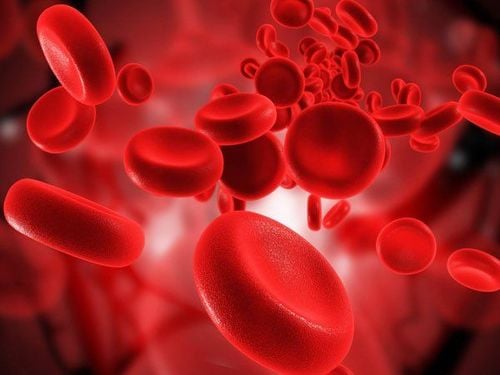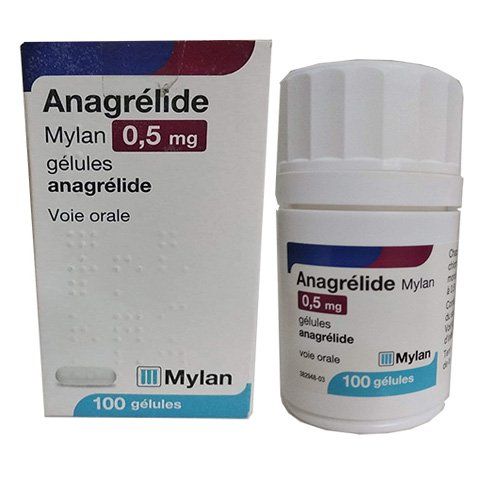This is an automatically translated article.
Platelet transfusion is indicated for the treatment and prevention of bleeding in patients with severe thrombocytopenia. This condition can be the result of bone marrow failure, decreased platelet production, or platelet dysfunction. Because of the nature of a blood product, platelet transfusions need to be performed according to the indications, in accordance with the principles to bring about optimal treatment effect.1. What are platelet preparations?
Platelets are small cells in the blood that form blood clots, helping to stop bleeding when blood vessels are damaged. They are essentially fragments of stem cells from platelets in the bone marrow, which are released into the bloodstream and travel throughout the body. When the vessel wall loses its integrity, the platelet-activated signaling system will alert the platelets to gather at the bleeding site, playing a role in initiating the next chain of hemostatic coagulation reactions.Some diseases can cause a decrease in the number of platelets in the blood such as bone marrow failure leading to a decrease in the number of platelets or platelets with congenital or secondary dysfunction. This can increase the risk of spontaneous or difficult bleeding with symptoms such as nosebleeds, bleeding teeth, bruises on the skin or worse, gastrointestinal bleeding, brain bleeding, sometimes dangerous. to life.
Thus, if the number of platelets in the blood is too low or bleeding is ongoing, doctors will prescribe platelet transfusions. This is a type of blood product obtained from people who donate whole blood or only platelets. At this time, the platelet transfusion is performed similarly to the transfusion of other blood products. Platelet units will be introduced into the body through an intravenous line and will have an immediate hemostatic effect.
Because platelets are sticky and have a very short life, if not indicated, platelet units have a recommended shelf life of no more than 5 days from the date of blood collection and must be stored at temperature from 20oC to 24oC under the condition of being shaken continuously.
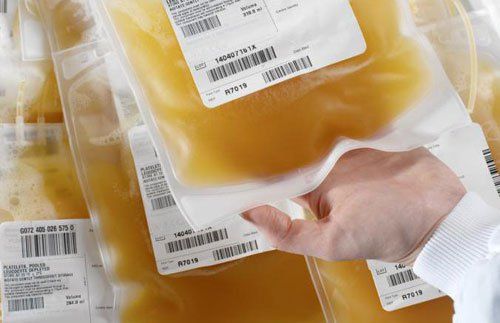
Nếu số lượng tiểu cầu trong máu quá ít hay đang diễn tiến chảy máu, các bác sĩ sẽ chỉ định truyền tiểu cầu
2. In what cases need platelet transfusion?
Clinical indications for platelet transfusion in patients with clinically significant bleeding include:Platelet transfusion is indicated for patients with clinically significant bleeding in thrombocytopenia even when the platelet count over 10 x 109/L. In patients with severe bleeding requiring large volume transfusions. In these patients, the use of whole blood, including transfusion and platelet transfusion, may reduce the risk of death. Platelet transfusion is indicated for patients with congenital or acquired platelet dysfunction requiring surgery or patients on antiplatelet therapy (except aspirin alone) requiring surgical intervention during ongoing bleeding. up. Platelet counts are unreliable when tested in these cases. Although there is no consensus on a target platelet threshold for bleeding control in patients with thrombocytopenia secondary to disseminated intravascular coagulopathy, platelet transfusion is intended to maintain a platelet count above 50x109/ L is widely accepted by the experts as it corrects the underlying causes and replaces coagulation factors. Re-infusion of platelets is not indicated in patients with chronic disseminated intravascular coagulation or who are not bleeding.
Platelet transfusion is not indicated in immune thrombocytopenia unless clinically significant bleeding is present.
Clinical indications for prophylactic platelet transfusion to prevent bleeding include:
Patients with severe thrombocytopenia undergoing chemotherapy and hematopoietic stem cell transplantation should be considered for prophylactic platelet transfusion when the levels below 10 x 109/L in the absence of risk factors and below 20 x 109/L in the presence of factors that may further reduce platelets such as fever.
In critically ill patients, in the absence of acute bleeding, platelet transfusions can be given when the platelet count is below 20 x 109/L. Platelet counts in infants need to be managed more closely and platelet transfusions may be instituted when neonatal platelet counts are less than 25 x 109/L for term neonates and less than 30 to 50 x 109/L in preterm neonates or any neonate with neonatal thrombocytopenia.

Trẻ sinh non cũng là đối tượng được chỉ định lâm sàng cho truyền tiểu cầu dự phòng
In patients undergoing invasive procedures, there is no evidence to determine a threshold platelet count is associated with an increased risk of bleeding. However, for patients undergoing procedures such as central venous catheters, lumbar puncture, biopsies, and endoscopic surgery, platelet counts above 50 x 109/L are considered safe. . Patients with lower platelet counts may still be allowed to perform minor procedures such as simple dental repairs, skin biopsies, peripheral venous needle placement, etc., after which thorough compression is required. For patients undergoing intracranial, intraocular, and neurological surgery, the platelet count is recommended to be kept above 100 x 109/L.
In patients with head trauma, platelet counts should be kept above 100 x 109/L.
Clinical contraindications to platelet transfusion include:
Platelet transfusion is not indicated in patients with bleeding unrelated to thrombocytopenia or impaired platelet function. For patients with heparin-induced thrombocytopenia and thrombocytopenia, platelet transfusion is contraindicated unless life-threatening bleeding occurs. After cardiac surgery is contraindicated.

Những bệnh nhân chảy máu không do giảm tiểu cầu được chống chỉ định truyền tiểu cầu
3. What should be noted when needing platelet transfusion?
Because platelets are also a form of blood product, platelet transfusions are also subject to strict regulations. However, the risk of blood transfusion events cannot be completely avoided, especially when platelets still have high antigenicity and adhesion. The following are things to keep in mind when giving platelets:3.1. Reaction to Platelets During blood transfusion, the patient's temperature, pulse and blood pressure are checked regularly. This is to ensure that there is no reaction to platelets or for early detection for prompt management. Common reactions may be:
Feeling of shivering Hyperthermia Itching Skin Rash If any of the above signs are present, the patient should notify the medical staff to stop the blood transfusion immediately and prompt treatment symptom. If the patient is still indicated for continued platelet transfusion, the use of irradiated platelets should be considered.
3.2. Antiplatelet status Because platelets are inherently cellular fragments, do not have a uniform intact shape, they are still antigenic and can trigger the immune system to react to reject. Accordingly, in these patients, the platelet deficiency will not improve despite platelet transfusion.
At this time, platelet transfusion is not indicated, but it is necessary to actively seek the causes leading to platelet resistance.
3.3. Risk of infection Since platelets cannot be synthesized but are obtained from blood donors, this can also be a route of transmission of blood-borne diseases.
Although blood or platelet donors are always carefully screened for infections or viruses such as hepatitis or HIV to make them as safe as possible, the risk of infection still exists. However, compared with the benefits, platelet transfusion is still indicated in patients with severe platelet deficiency or life-threatening bleeding.

Truyền tiểu cầu cũng có thể là một con đường lây nhiễm các bệnh lây truyền qua đường máu
Irradiated platelet preparations in particular, and irradiated blood products in general, will reduce the risk of autoimmune reactions. The same should apply in patients with a history of fever that is difficult to control during blood transfusion or who have medical conditions that require large and prolonged blood transfusions.
In summary, patients who are bleeding and have a low platelet count or thrombocytopenia threatening to bleed will be indicated for platelet transfusion. Since this is also a blood product, the benefits and risks of platelet transfusion should also be compared. At the same time, patients need to actively find the cause of the decline in platelet count and function, ensuring a stable diagnosis and treatment later.
To register for examination and treatment at Vinmec International General Hospital, you can contact Vinmec Health System nationwide, or register online HERE
Reference source: blood.gov.au ; Annals.org.
MORE:
Are low platelets dangerous? Thrombocytopenic purpura: Causes, symptoms, diagnosis and treatment What is the number of red blood cells in the body?




